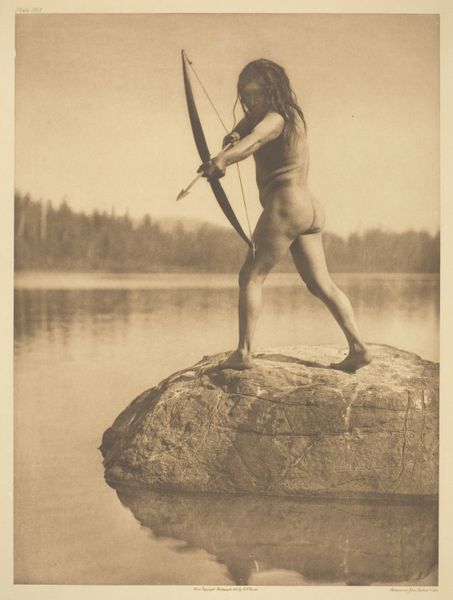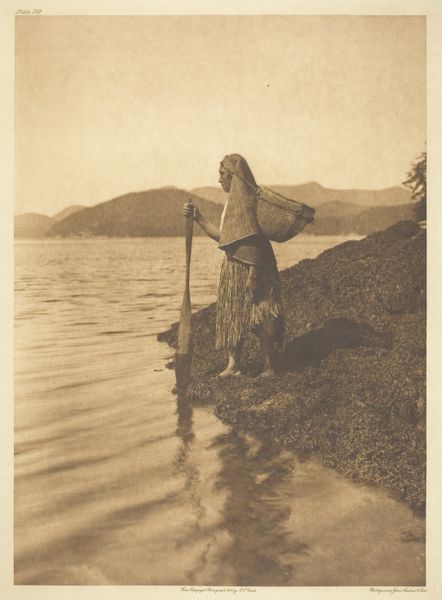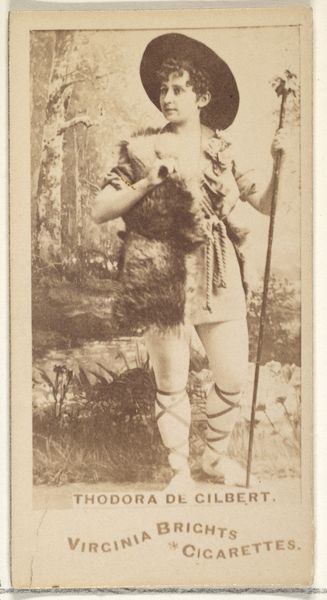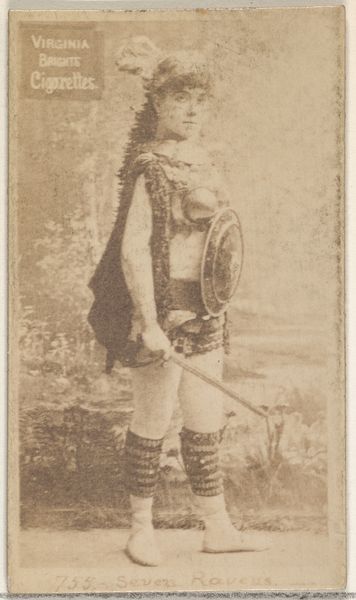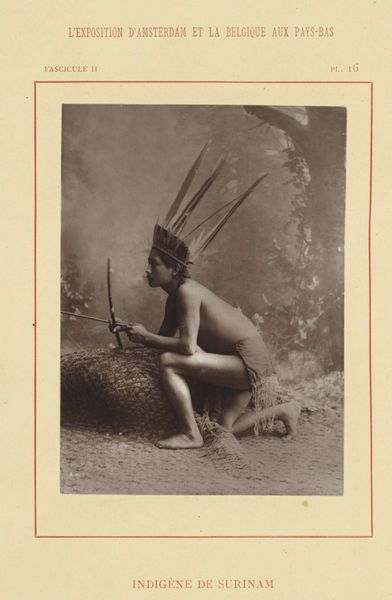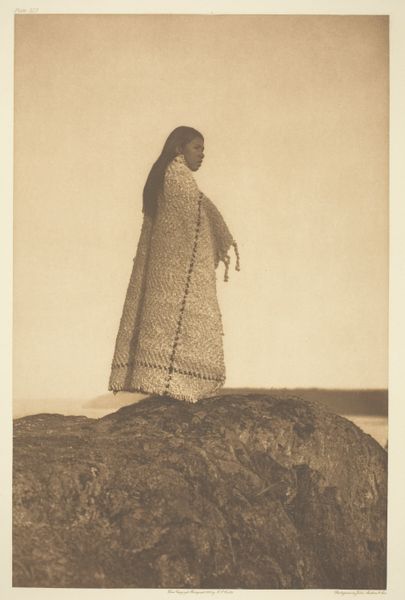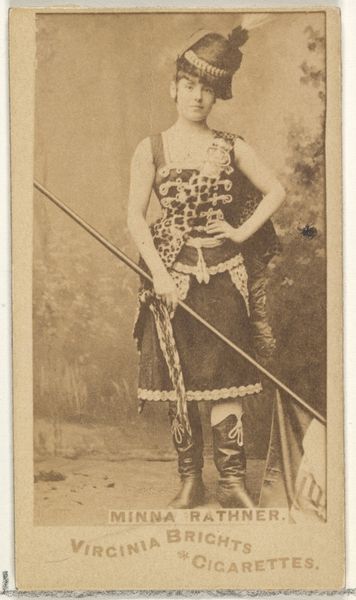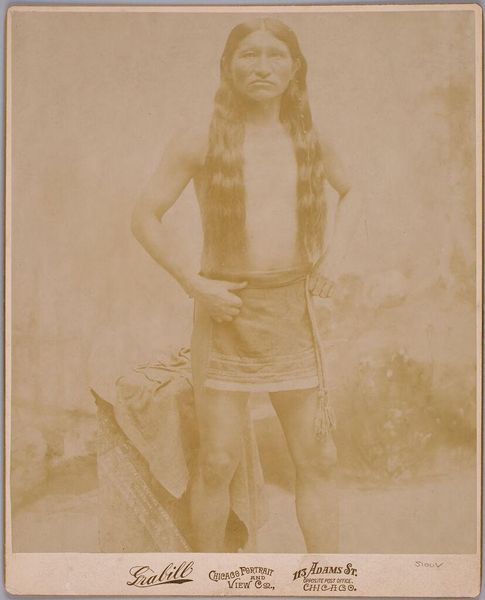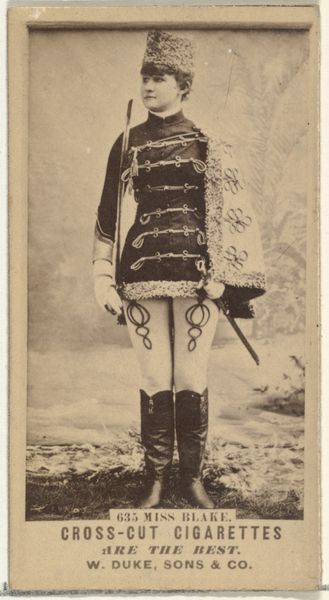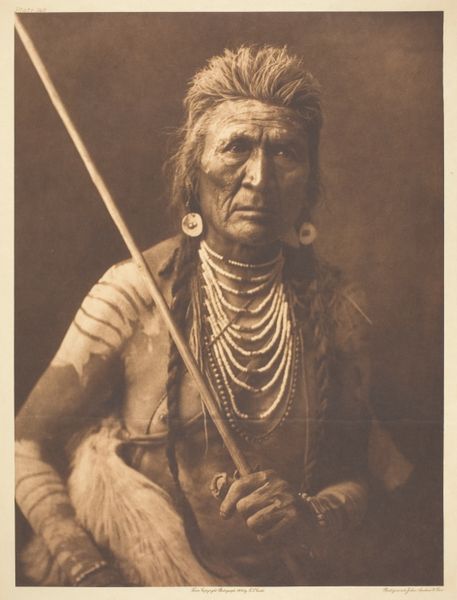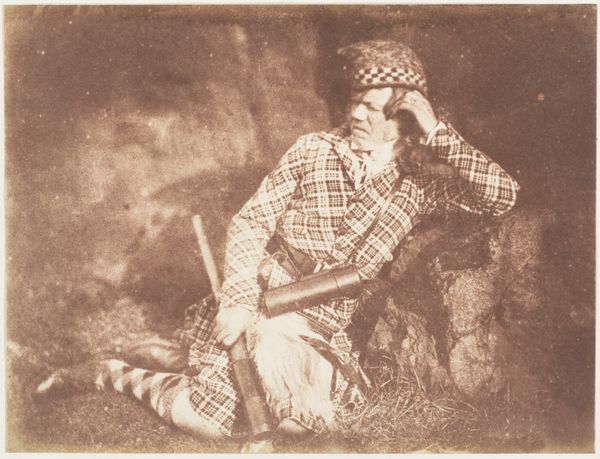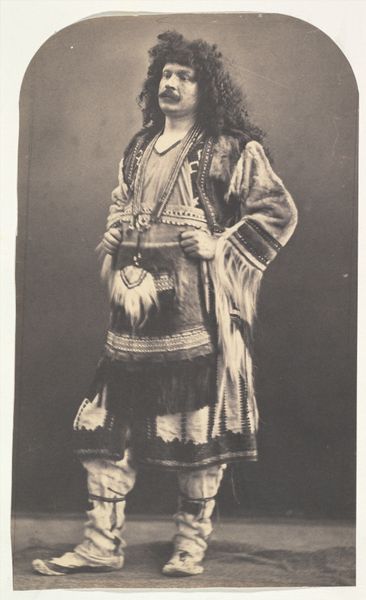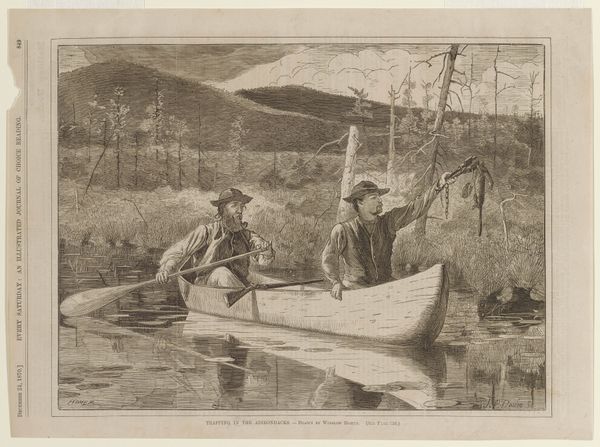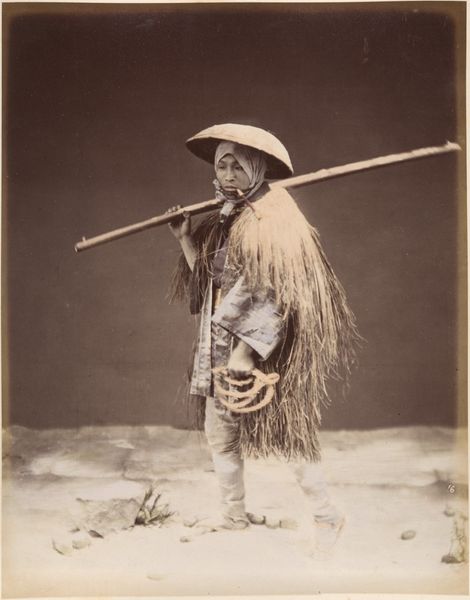
photography, gelatin-silver-print
#
portrait
#
photography
#
gelatin-silver-print
#
indigenous-americas
Dimensions: 39.8 × 28.2 cm (image/paper); 56 × 45.8 cm (mount)
Copyright: Public Domain
Edward S. Curtis made this photograph called The Whaler-Clayoquot, somewhere around the turn of the 20th Century, using light and chemistry. Look at the way the sepia tones wash over everything, unifying the figure with the landscape. The tonal range is very narrow. It's like a memory, soft and a little indistinct. The texture of the man's woven garment is incredible. You can almost feel the rough weave against your skin. Curtis captured the way the light catches on each individual strand, creating a pattern that is both organic and geometric. The whaler is holding a long spear, and its sharp point directs our gaze upward. It is slightly blurred. This blur adds to the feeling that this is a moment snatched from time. Painters like Gerhard Richter use similar techniques of blurring to explore the relationship between photography and memory. Curtis' photograph does this too. It acknowledges that every image is a construction, a story, and not just a record of reality.
Comments
No comments
Be the first to comment and join the conversation on the ultimate creative platform.
